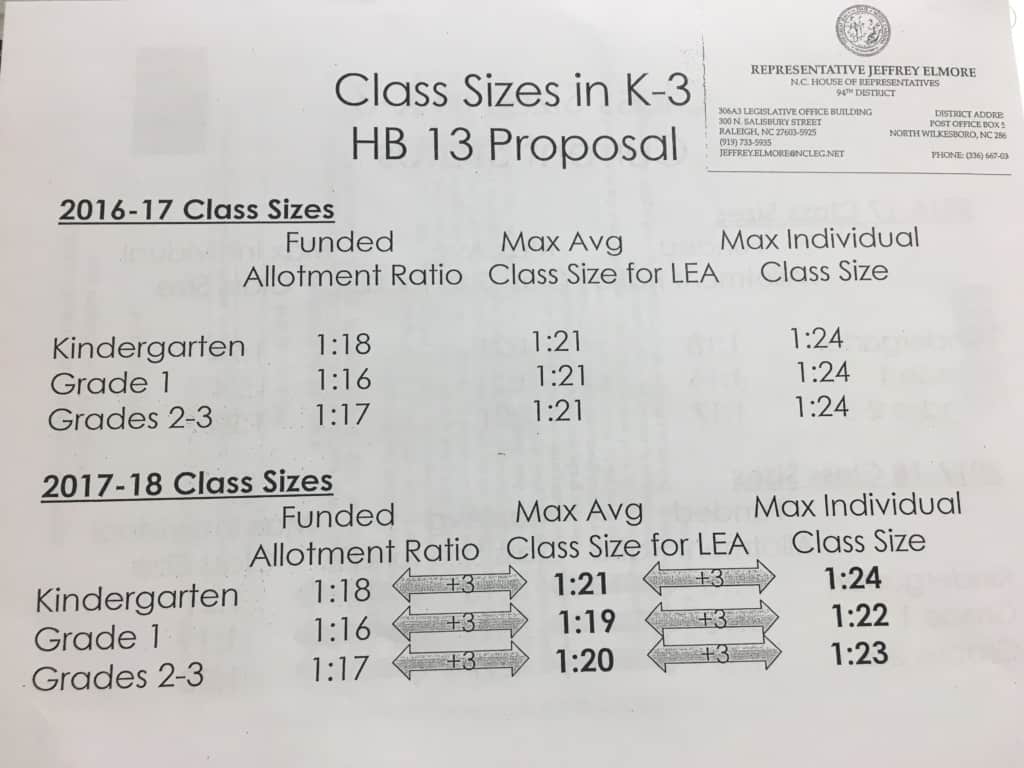Two education-related bills which the House Committee on K-12 Education gave favorable reports on today would give flexibility to school calendars and attempt to ease the process of reducing class sizes in N.C. public schools.
Both were filed Wednesday night after the legislature’s fourth special session of the biennium was called “to consider bills concerning any matters the General Assembly elects to consider.”
School calendar flexibility
House Bill 12 would give all public school districts the option of aligning any of their schools’ calendars with the calendar of the community college that serves their city or county.
After the bill was heard in the House Committee on Education, the bill was removed from the House floor’s calendar Thursday evening and re-referred to the Committee on Rules, Calendar, and Operations of the House, which has not yet been scheduled.
Rep. Craig Horn, R-Union, one of the bill’s sponsors and one of the House Committee on Education’s chairs, explained the legislation’s intent to the committee.
“This has been a longstanding request” from educators and school boards, Horn said. “There’s no complexity in this bill. It’s a simple matter of allowing each LEA to make that adjustment if they feel it’s in their best interest.”
Before this bill, public schools opened the Monday closest to August 26. N.C. Community College System spokesperson Chreatha Alston said most community colleges open the second week of August, around the 9th. But Alston said it depends on the school, and that some don’t go back until the third week of August.
Rep. Chris Whitmire, R-Henderson, said he supports the option to shift calendars, especially for students who attend early colleges. Ending a semester in public school and starting college courses at the same time is extremely difficult, Whitmire said.
Rep. Frank Iler, R-Brunswick, said he doesn’t see the need to open up this option to every school in the state.
“I support the concept of early college being married time-wise to the students going to community college,” Iler said. “I cannot support opening it up to 100 percent of schools.”
Classroom size shift
House Bill 13, titled Class Size Requirement Changes, would provide flexibility between classroom size limits and the allotted ratio of teachers to students. That flexibility is used to fund teachers in classes like health/physical education, arts, and world languages but was limited by the 2016-17 budget’s reduction in class sizes.
The legislation tweaks the budget’s language to let the maximum average classroom size for K-3 exceed the teacher to student ratios by three students, and the maximum individual class size for K-3 by six students.
The teacher to student ratios would remain the same as they were in the 2016-17 budget:
Kindergarten: one teacher per 18 students
First grade: one teacher per 16 students
Second grade: one teacher per 17 students
Third grade: one teacher per 17 students
To be clear, this would not change the amount of funding given to schools — it just changes how schools are allowed to use that funding.
Below is a handout that House Education Committee Chair Rep. Jeffrey Elmore, R-Wilkes — the sponsor of the bill — used to explain the change that House Bill 13 would bring.
Rep. Jeffrey Elmore, R-Wilkes, is the bill’s sponsor and explained its reasoning in the House Education Committee, which he chairs, this afternoon.
“In our budget we changed the ratios in K-3 because of our commitment to Read To Achieve to have all of our students reading by grade three,” Elmore said.
Elmore said he’s concerned that implementing the smaller class sizes in the 2017-18 school year is too soon.
“There’s been some hiccups or disruptions to be able to implement it on that timeline,” Elmore said. “This is a proposal to offset some of that disruption.”
The bill would maintain “maximum flexibility” for higher grades “to use allotted teacher positions to maximize student achievement,” the bill reads.
Committee member Rep. Graig Meyer, D-Orange, asked if the bill’s flexibility would be sufficient to address the concerns of schools worried about staffing issues — or if he’d still be getting calls from schools.
“This is somewhat of a short-term solution,” committee chair Rep. Linda Johnson, R-Cabarrus, said. She turned to chair Rep. Craig Horn, R-Union to explain a longer-term solution.
Horn said the same task force that will study the feasibility of changing how the state distributes funds to public schools will address this issue as well.
“How do we realign public education funding to be more accommodating to the needs of the students?,” Horn said the group of legislators and education professionals will ask. “The focus should be on the students and delivering a quality education.”
“All of these funding streams, funding models, funding silos — all of those are going to be on the front burner when this task force is implemented, which will be in the coming year.”





